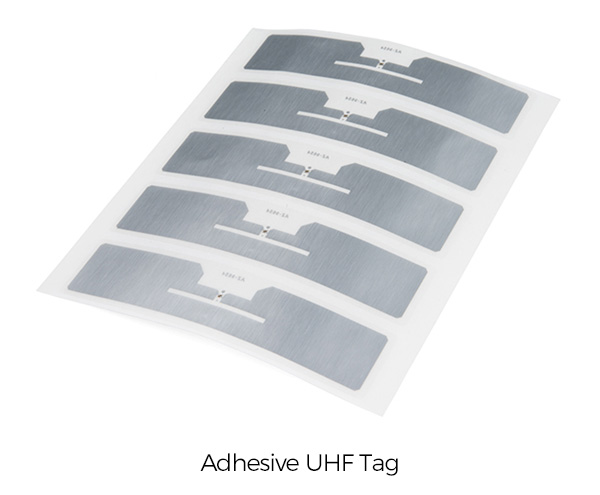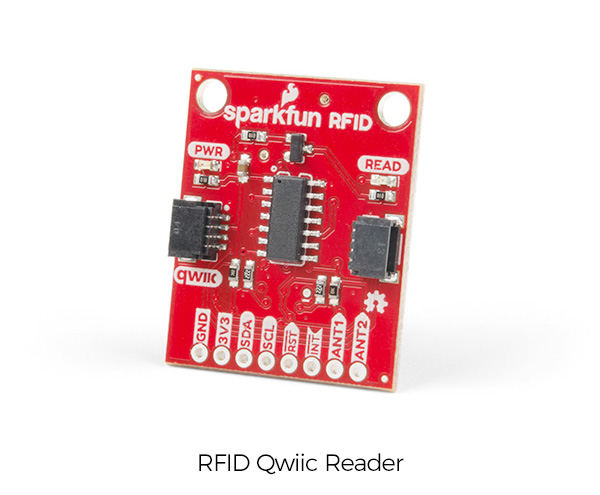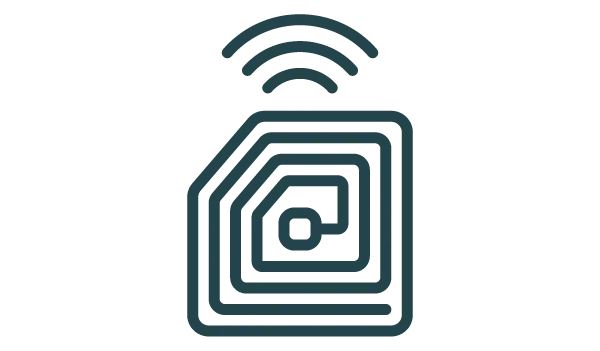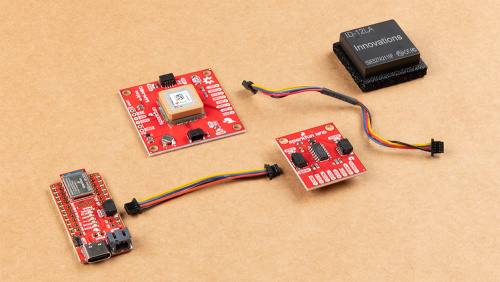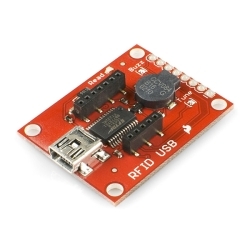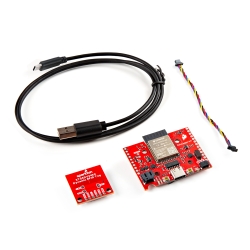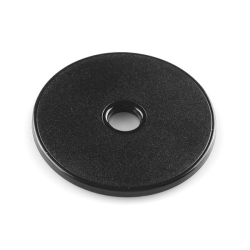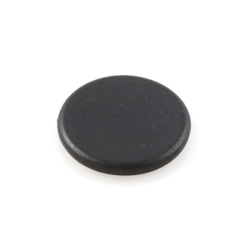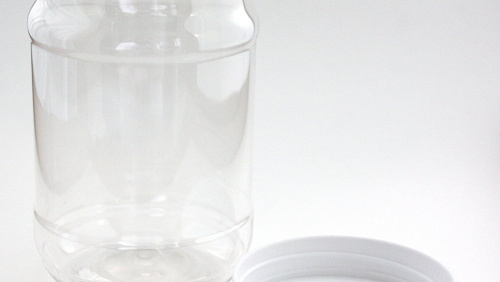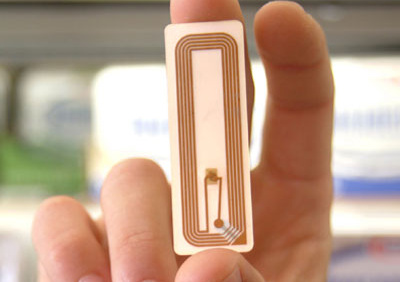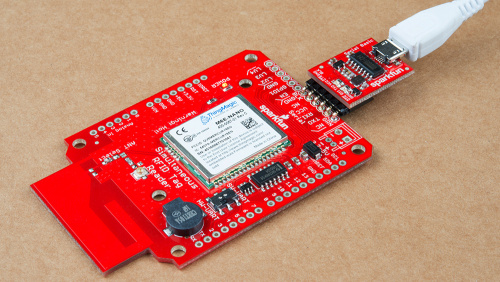Using RFID Tags And Readers
With a simple gesture, information is shared through thin air. Radio Frequency Identification (RFID) allows devices to share information without physical contact. This technology has many uses - let's jump in and learn what it is, how it works and how you can use it.
Get a quick overview and see how Rob uses the RFID Qwiic Kit to keep track of his family's M&M consumption.
Tags and readers
RFID is similar to other wireless communication technologies such as radio transmitters, Bluetooth, LoRa, etc. Systems are made of two components, tags and readers. Tags contain data, and readers detect the tag and process the information from the tags when in range (more on this later). Tags have a small amount of memory that stores a unique tag identifier (TID), which is not editable. The little bit of data left on tags can be read-only or writeable, depending on how the tag was designed.
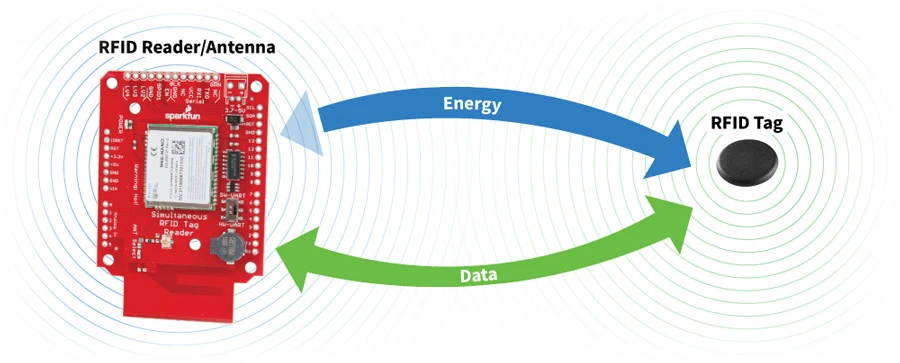

You've no doubt seen RFID being used in everyday life - for example in security badges. A security badge is an RFID tag that contains a unique ID scanned by the reader. When the badge is detected by the reader, the reader will read the tag data, process the data if needed, and then pass the data to be validated by the access control system. The system will then determine if the secured door will unlock or not.
Another example is tracking times for marathon runners. Keeping track of tens of thousands of runners is made relatively easy by giving each participant an RFID tag. RFID readers are placed at the starting line and the finish line, giving the ability to know exactly when each runner starts and finishes their race. No matter the application, the technology behind RFID comes down to electromagnetic waves.
Electromagnetism
How is it possible that tags, with no power source of their own, can possibly communicate with a reader? This is where electromagnetism comes in. Once a passive tag comes within range of a reader, the tag receives electromagnetic energy from the RFID reader's antenna. The tag’s antenna is conductive material that, when struck with electromagnetic waves, induces an electric current powering the IC on the tag. The tag then “turns on” and starts broadcasting its data. It's then the reader's job to interpret the signal received from the tag into usable data.
Passive vs active
As explained above, RFID tags are able to harness energy from the reader's electromagnetic field. This is passive RFID. The other option is active tags. Active tags are self-powered, generally with a battery, which boosts the signal of the tag. This allows active tags to have a longer range than passive tags.
Radio frequency matters
Simply having a reader and tag within range of each other doesn't guarantee they'll be able to communicate. They must also be using the correct radio frequency and, if encryption is used, have the proper keys. Whatever RFID reader you are using must be able to read the carrier frequency of the tag you need to read. This information is usually found on our product page descriptions or datasheets.
Most RFID applications fall into three different categories:
-
Low Frequency (LF) at 120-150 kHz
- Typical RFID applications are at 125kHz
- Used in keycard access and animal tracking
- No encryption
-
High Frequency (HF) at 3-30 MHz
- Typical RFID applications operate at 13.56MHz
- Used in access control, NFC, transit tickets, data transfer applications, mobile applications
- Encryption options range from none to strong
-
Ultra-high frequency (UHF) at 433, and 860-960 MHz
- Used in asset tracking, race timing, laundry management, toll passes
Generally speaking, the higher the frequency the further the read range. However, there are many factors such as antenna size, environmental factors, line-of-sight, and whether the tags are passive or active that can affect the working distance between tag and reader.


Building Your First RFID Project
As with any new technology, let's dip our toes in the water first before we swim in the deep end. The following project will show you some of the basics and showcase some common tags.
Make sure to look at our hookup guides!
When learning how to use RFID hardware, one of the best ways to learn is to view the hookup guides. For each product SparkFun carries, we have an associated hookup guide on the product pages located under the description. We do our best to walk through all the connections needed, associated libraries and a working demonstration or two to get your project off the ground.
Products
As with any technology, RFID hardware comes in many shapes and sizes to fit the specific needs of your project. Below we have listed a few of our favorite readers, tags and kits we carry at SparkFun.
RFID Readers
RFID readers can be standalone, or attach to a breakout board for ease of use.
Additional Resources
Here are a few other tutorials and blog posts that showcase RFID.
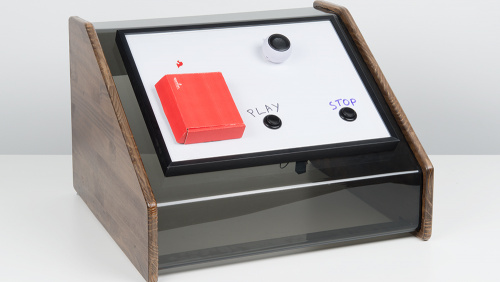

Follow this tutorial to build your own custom jukebox. Note, this is designed simple and tough for use primarily with toddlers. It's also a great introduction to SparkFun's Qwiic products!

